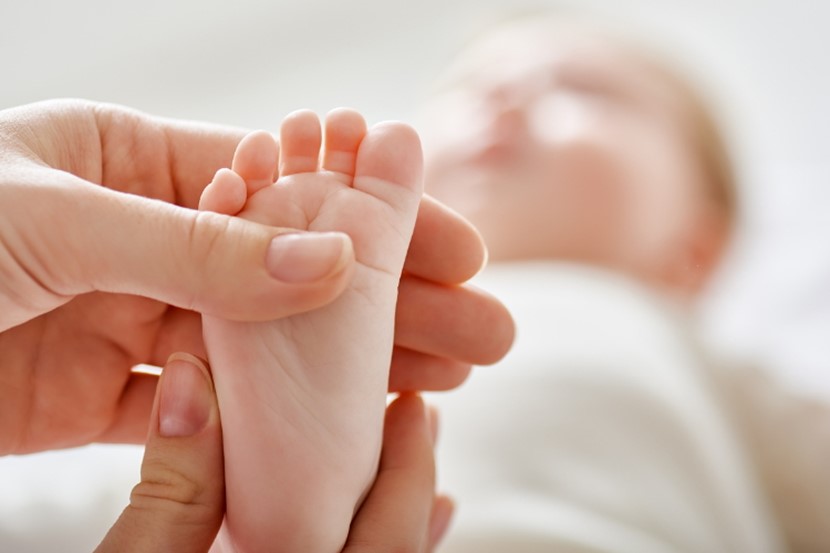Newborn Tests & Checks Explained

Newborns have barely taken their first breath before keen eyes are examining them and the first of many routine tests are carried out. Paediatric registrar and new mum Hannah Noel explains what’s going on.
Pregnancy is a fairly information-dense season –books, websites, pamphlets, weekly emails likening the size of your baby to fruit (fig, orange, pineapple?) and the well-meaning advice of friends and strangers. But if you think pregnancy is info-overload, the wonderful world of the newborn is arguably even more so. Your LMC is charged with telling you what you need to know but you could be forgiven for getting a bit confused, especially with baby brain in full swing!
There are a number of important newborn tests and checks all designed to ensure your baby is healthy and to pick up any concerns early on. Some babies require other investigations as a result of issues identified during the pregnancy or newborn period (eg blood tests for bilirubin levels for a jaundiced baby). Your LMC will discuss these with you as they become relevant.
Our beautiful Elise was born in January at “full term” following a relatively uncomplicated pregnancy and delivery. When I think of those adrenaline-charged first 36 hours, newborn tests are not what leap to mind. Indeed, my recall of those tests is scanty at best – and these are tests I carry out or interpret on a daily basis. So if you are pregnant, a proud new parent or scrambling back through a haze of newborn memories trying to recall what happened when, here is a beginner’s guide to newborn testing – what, when, where and why these tests are necessary, and where you can go for more information.
Apgar scores
The Apgar score is designed to be a measure of the baby’s condition at birth and transition to life outside of the womb. A score out of 10 is given to the infant at one and five minutes of life based on five physical signs – colour, breathing, heartbeat, muscle tone and response to stimulation. A baby who cries straight away and is alert and vigorous will generally be given high scores of 8-10, depending on their colour. Low Apgar scores may be explained by a number of different processes including lack of oxygen to the baby during delivery, drug exposure, trauma, bleeding, infection or congenital anomalies. The scores are not designed to be predictive of long-term outcome. They are part of the newborn record and are written in your baby’s Well Child book.
The baby check
This is the first full and complete examination of the newborn baby and should be performed within the first few hours following delivery. It is designed to identify everything from the benign (minor things such as birthmarks) to potentially serious (eg cleft-palate, unstable hips or club feet) or sometimes life-threatening conditions that can be detected by the trained examiner. The baby check is performed by your LMC or a member of the paediatric or neonatal team.
The baby check involves a “top-to-toe” assessment of your newborn including measurements (weight, length and head circumference) that can be plotted on the graphs in your Well Child book. The head is fully inspected including the scalp, fontanelles, eyes, ears, nose, mouth, palate and neck. This includes the “red reflex” – the reflection of a bright light from the back of the eye to rule out serious conditions such as cataracts. The chest is examined, including the position of the heartbeat, and heart and breath sounds are listened to with a stethoscope. The abdominal examination looks for abnormal enlargement of liver, spleen or kidneys. The umbilical cord is inspected to ensure there are the expected three vessels present. The “femoral” pulses at the top of the legs are checked, as are the male or female genitalia. The hips are examined for “clicks” or “clunks” that might indicate a tendency to dislocate, specifically looking for a condition called “developmental dysplasia of the hip” (DDH) which occurs in 1-2/1000 children. The spine is inspected to ensure it is straight and there are no defects of the overlying skin and the bottom is checked to ensure all is as it should be.
Examination of the limbs includes counting the fingers and toes. The baby’s level of alertness, tone and posture are assessed as well as the primitive neonatal reflexes, which include sucking, grasp and startle. It may all seem a lengthy and complex process but in reality takes a few minutes as the majority of baby checks reveal a healthy baby with few concerns. Where issues are identified, specialist assistance can be summoned or referral initiated to ensure prompt investigation or treatment.
Newborn metabolic screening programme
Also known as the “heel prick” or “Guthrie card”, the newborn metabolic screening programme screens for rare but potentially serious disorders where early treatment can prevent serious complications. Screening is free and strongly recommended by the Ministry of Health for all babies born in New Zealand.
Metabolic disorders occur when pathways that produce certain biochemicals are disrupted. This can lead to a build-up of toxic chemicals or lack of important biochemicals in the body. Each year about 45 babies are diagnosed with a metabolic disorder, most with no family history. Conditions screened for include phenylketonuria (PKU), cystic fibrosis and congenital hypothyroidism. Currently 28 metabolic diseases are screened for in New Zealand. Affected babies generally do not show any signs and symptoms at birth so these conditions are tricky to diagnose without a blood test.
A blood sample is taken by pricking the baby’s heel with a tiny lancet and collecting a small amount of blood on special collection paper. This is often easiest and kindest to do when the baby is feeding and is done as close to 48 hours of age as possible. The blood sample is then dried and sent to the laboratory for testing.
It is important to know that this is a screening rather than a diagnostic test – if an abnormality is identified, your LMC will be contacted to arrange further investigation. A specialist referral will be needed before a diagnosis is made. Screening identifies almost all babies who have the metabolic disorders tested for but there is a small chance that some babies may be missed or the screening test may give a “false positive” result (ie the test is positive but the child does not have the disorder), and this is picked up with the diagnostic testing.
Universal newborn hearing screening programme
In New Zealand, up to 170 babies are born each year with a significant hearing loss with over half having no family history or other risk factors. Without screening, it can be difficult to detect hearing loss in babies until speech is delayed, which can have implications for a child’s language, learning and social development. National newborn hearing screening was introduced in 2007 and is offered to all babies born in New Zealand within their first month of life. It often takes place before a baby leaves hospital.
Most babies have otoacoustic emission (OAE) screening where a small earpiece which makes soft clicking sounds is placed in the baby’s ear. Tiny hairs inside the ear move in response to the clicking sound and make their own soft sounds which are picked up by a computer. It is a quick, painless process best carried out when baby is settled or sleeping. If there is no clear result from the OAE screening, or your baby is identified as being higher risk for hearing loss, different testing may be required and you will be referred accordingly.
Some babies require repeat screening. Our daughter had fluid in her ears on day two of life so a clear result was not obtained, but all was well when the test was repeated on day three. Newborn hearing screening is designed to pick up moderate to profound hearing loss and may not pick up mild loss or some types of hearing loss that develop during childhood. If you have any concerns about your child’s hearing at any age, talk to your LMC, GP, Well Child provider or early childhood teacher.
Six-week check and immunisations
After a flurry of tests in the first few days it seems a big jump to six weeks. In between, there are several visits from your LMC or post-natal midwife who will keep an eye on your baby’s feeding, growth, input/output and general wellbeing, eventually referring you to your choice of Well Child provider. At six weeks you will be encouraged to see your GP for the six-week check. This is a very similar examination to the “baby check” described earlier. Write down and ask any questions you have. Immunisations are also offered at this visit.
It is a whole new world, those first six weeks, especially for first-time parents. If you have any further questions regarding newborn tests and screening, your LMC is the first port of call, and there are also some great websites to have a look at below.
|
Hannah Noel is a paediatric registrar at Starship Children’s Hospital. She is currently working 24-hour shifts, on maternity leave with her five month old daughter.
Newborn testing can identify disorders that could make your baby sick or issues that could affect their development. So it’s worth considering your options carefully. |

AS FEATURED IN ISSUE 26 OF OHbaby! MAGAZINE. CHECK OUT OTHER ARTICLES IN THIS ISSUE BELOW

















